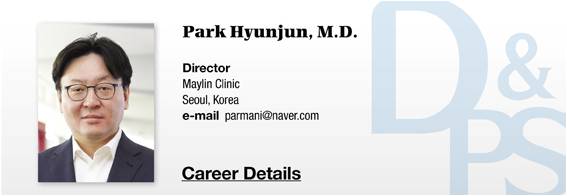
▶ Previous Artlcle: #1-3. Overview of Skin Booster
Mechanism of skin boosters
Usually, modulation between collagen production and MMP-induced collagen degradation deteriorates with the UVB-induced skin aging process (Figure 4).
To be more precise, secretion of IL-1α and GM-CSF, pro-inflammatory cytokines, is promoted by UVB in epidermal keratinocytes, which contributes to irritation to dermal fibroblasts followed by stimulation of enzymes such as elastase which destroys several ECM proteins.
HELIOSⅡ/LOTUSⅡ/HYPERION – Manufacturer: LASEROPTEK(www.laseroptek.com)
This in turn speeds up the skin aging process.
As shown in <Figure 4> (the diagram on the right), increases in plasmin and gelatinase lead to the BMZ damage induced by the degradation of laminin, the key protein of the basement membrane zone (BMZ), as well as type IV and VII collagens above the papillary dermis which are critical for regeneration of the aging skin, thereby destroying the epidermis and the dermis simultaneously and then facilitating aging of all the skin layers.
Therefore, skin rejuvenation boosters work to normalize the functions of various substances of ECM centered on epidermal keratinocytes, BMZ, and fibroblasts and provide therapeutic substrates to the skin for aging prevention and regeneration of the sensitive skin.
The ingredients of skin rejuvenation boosters, which are designed to regenerate dermal fibroblasts, can be divided into some categories as below, despite their many different types.
Figure 5. Navid Bouzari, Mohamed L. Elsaie, and Keyvan Nouri. Laser and Light for Wound Healing Stimulation, Dermatology and Medicine. 2013.
-To be continued





















